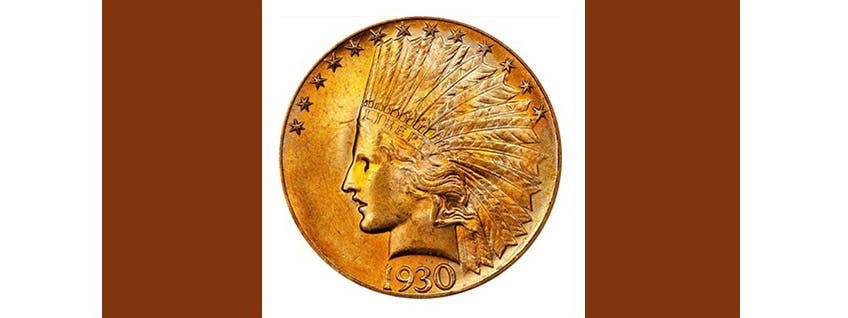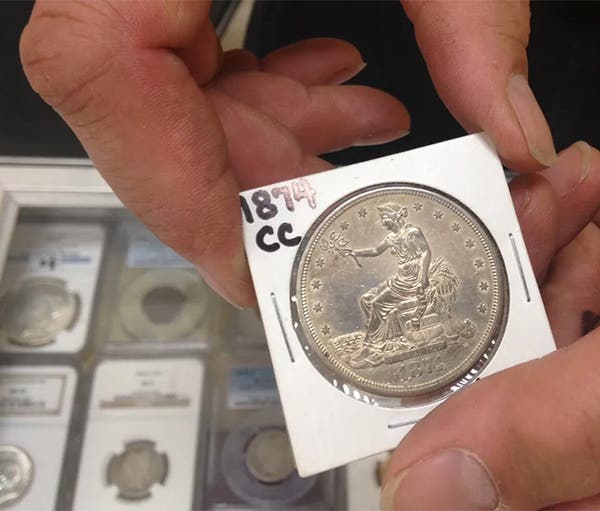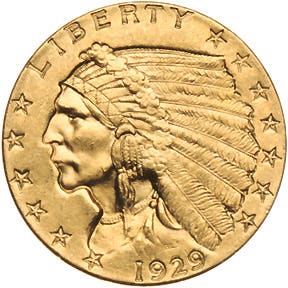Genuine Coins Have “Style”
While it is obvious today that to authenticate a coin, you must know what the genuine coin should look like, at one time this was taken for granted. When I…
While it is obvious today that to authenticate a coin, you must know what the genuine coin should look like, at one time this was taken for granted. When I became an authenticator, I never saw it expressed anywhere! I am certain this primary “rule” of authentication was formalized in print and passed on during our authentication seminars starting in 1973 due to a very fortuitous event.
One day at the Certification Service, we almost returned a very worn 1915-S Pan Pac $50 (carried as a pocket piece) to a walk-in the customer as a cast counterfeit because it looked so crude under a microscope. Its surfaces were extremely wavy, and its design was not as sharp as we should have expected. Thankfully, it was a beautiful summer day in DC (no humidity) and we decided to walk over to the Smithsonian with the coin while our customer went to lunch.
Once there, after examining a few high-grade pieces under our microscope, we realized in horror what we had almost done – called a perfectly genuine coin a counterfeit! If you ever get to hold one of these coins, you’ll notice how wavy its surface is. The only part of the coin with the normal “Mint Quality” sharpness one would expect is the “S” mintmark that is identical to the mintmarks of that era. These coins look more like artistic medals than the coins.
I’m using this story to introduce readers to one of the important characteristics of genuine coins – their “style.” I first learned this way of evaluating a coin while working for a dealer in ancient coins. “Style,” the artistry of the coin’s engraving and skill of its maker plays an important part in an ancient coin’s desirability and value.
This is as it should be as we all have our own idea of attractiveness when it comes to both people and objects. The closer our notion comes to the prevailing norm; the more folks will agree with us. I’ll inject a bit of humor regarding this about a collector of ancients I once knew. He would examine a tray of ancients arranged with their most attractive side up and return each one to its spot with its best side down. Who knows why? I needed to set everything “right” again when he left.
A coin’s style, its appearance, is an important factor in authentication. Very often, a knowledgeable collector can look at a coin and tell it is “not right” just by its design. Often its style is “off” because the die used to strike the fake was crude by normal mint standards – its “Mint Quality.” With practice and by studying genuine examples, a collector can develop what is called a “gut-reaction” to a coin’s appearance. You may not know for sure one way or the other if the coin is a counterfeit or not, but you will know that it looks “different” from those you’ve seen before. In reality, the style of a counterfeit coin can vary tremendously. State-of-the-art fakes can be found sold by experienced dealers while some fakes are so poorly executed that even a blind collector could tell it was counterfeit just by holding it!
Since we all have different abilities, one man’s deceptive counterfeit is another man’s crude, poorly styled, piece of junk. After I was promoted from an office clerk at the Certification Service, my first lesson on counterfeit detection had everything to do with the “style” of a fake. I was shown a counterfeit gold piece like the coin in Figure 1 and taught that the rounded and “fuzzy” berries on its reverse were very crude when compared to how they should look on a genuine specimen. You can see how bad the design is on a fake when compared to that on a genuine coin (Fig.2).
One place I recommend you look on the modern counterfeits from China that have flooded the market is the date numerals. In many cases the design of the coin is passable at first glance, but the numerals of the date are extremely crude. Since a large number of these coins replicate 19th Century coins, coins of all types have an “8” in the date. Just knowing how the numerals should look on a genuine coin will give you a good step up on the counterfeiters. Suspicious coins should be sent to one of the major TPGS.








